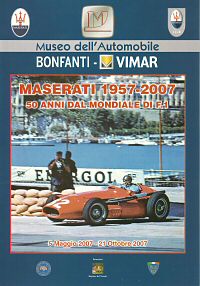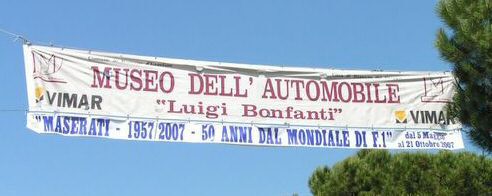 "MASERATI - 1957/2007 - 50 ANNI DAL MONDIALE DI F.1" at the Museo Dell'Automobile "Bonfanti-VIMAR" |
||
| A superb exhibition of Classic Racing Maseratis EXHIBITION ENDED 21st OCTOBER 2007 |
||
The last time I visited the Museo dell'Automobile "BONFANTI back in 2001 and if you have missed that opportunity to visit the museum, you can see most of the exhibits at maser01.htm. |
||
 "MASERATI - 1957-2007 - 50 ANNI DAL MONDIALE DI F.1" at the Museo Dell'Automobile "Bonfanti-VIMAR" |
||
 OUR SPECIAL THANKS GO TO THE SPONSORS OF THIS MAGNIFICENT EXHIBITION |
||
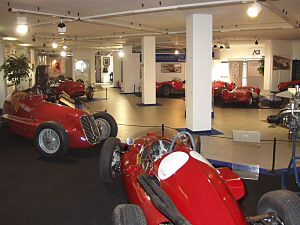 The Ground Floor Exhibition Hall |
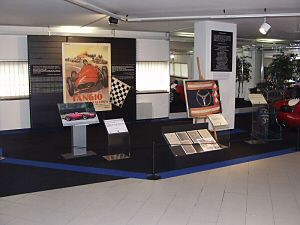 The Ground Floor Exhibition Hall |
|
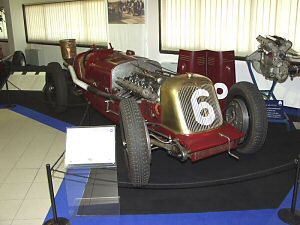 The Maserati Tipo V5 |
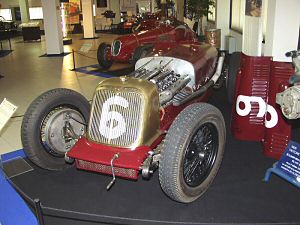 5-litre V16 |
|
An evolution of the Tipo V4 from the years 1929 to 1931, the Tipo V5 kept to the original structure of that engine with 16 cylinders in twin 25° V8 lines: the capacity however was increased from 4 to 5 litres, thus producing an extreme abundance of power. Its excellent technical specification notwithstanding, the car did not achieve important results, often beset by unrelated technical problems, such as a broken accelerator linkage. |
||
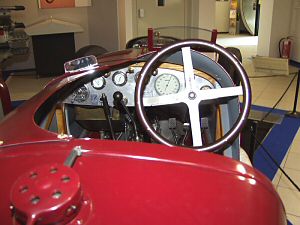 |
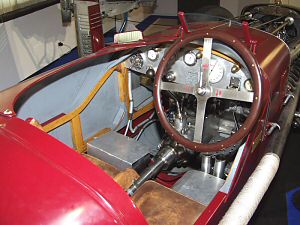 |
|
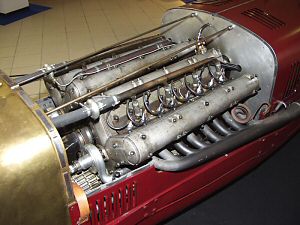 |
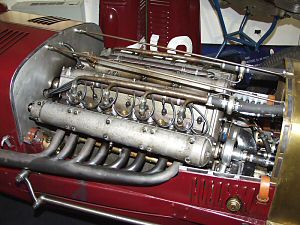 |
|
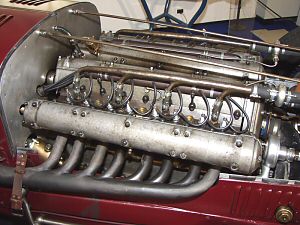 |
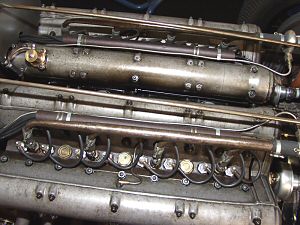 |
|
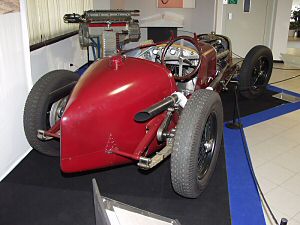 |
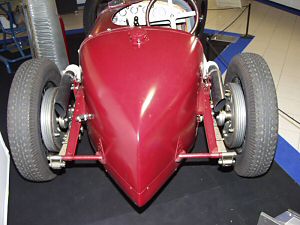 |
|
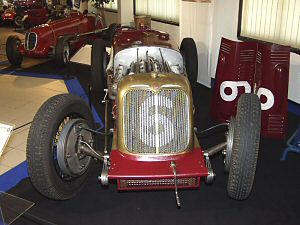 |
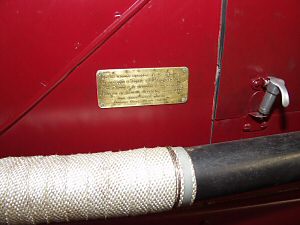 |
|
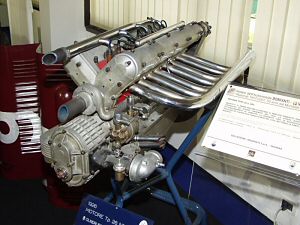 The Maserati Tipo 26 engine #001 |
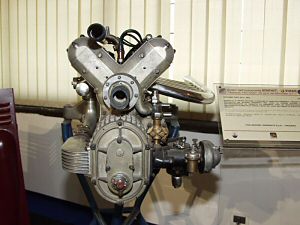 |
|
This is the first Maserati engine developed and built by Alfieri Maserati in 1926. Alfieri himself raced the Tipo 26 to victory in the 1500 cc class at the Targa Florio that year beating the strong Bugatti team. |
||
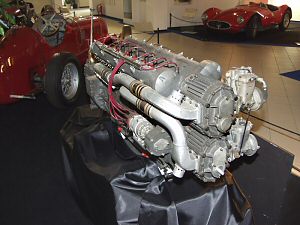 The Tipo 8CL engine #3037 |
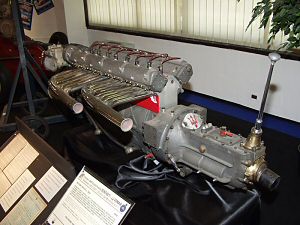 |
|
Designed between 1939 and 1940, it was the obvious evolution of the 8CTF engine, which in those same years won the Indianapolis 500. With four valves per cylinder and square internal dimensions of 78x78 mm, this supercharged engine was cut off in its prime by the outbreak of WWII. After the war, the 8CL was raced at Indianapolis by Luigi 'Gigi' Villoresi in 1946 and again by Californian Fred Agabashian in 1949. |
||
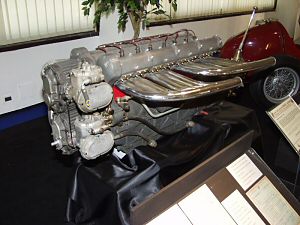 Twin Roots superchargers |
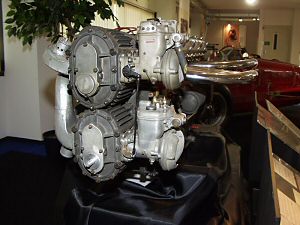 |
|
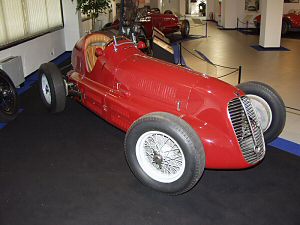 1938 Maserati Tipo 4CM |
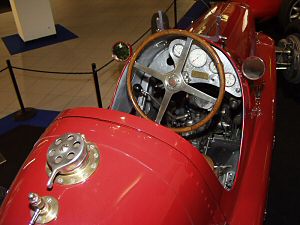 |
|
The chassis of the Tipo 4CM was reduced in overall size in an effort to save weight, a component essential for efficiency. One of these chassis was later bodied as the Tipo 4CL from 1939 on. |
||
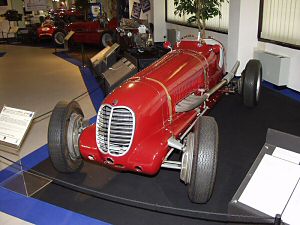 1936 Maserati Tipo 6CM |
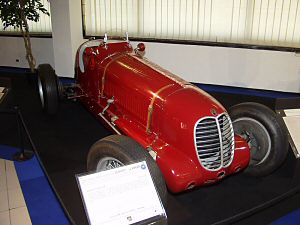 |
|
Developed to compete with the British ERAs in the Grand Prix class up to 1½-litres, the new Maserati was a classical, yet very competitive motor car. The body, with rounded lines, was a major progression from an aerodynamic point of view. In 1937, the Maserati brothers sold the controlling interest of their company to the Orsi family, staying on as technical managers for ten more years. |
||
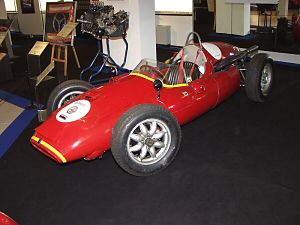 1961 Cooper Maserati T51 |
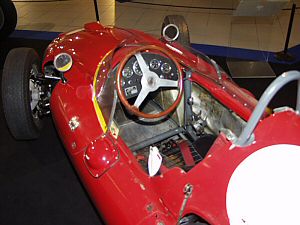 |
|
After withdrawing from racing in 1957, Maserati produced racing engines for use in cars owned by privateers, teams and individual drivers in both the Formula 1 and Sportscar categories. The Tipo 6 1.5 litre engine, derived from the Tipo 150S 4 cylinder Sports, was installed in a Cooper chassis. In Italy, the Cooper-Maserati T51 was entered in races by Guglielmo Dei's Scuderia Centro Sud. |
||
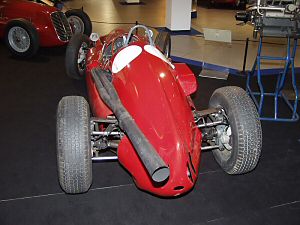 1961 Cooper Maserati T51 |
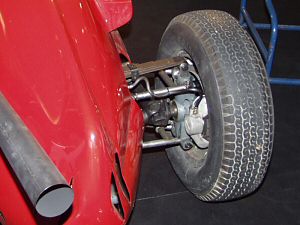 |
|
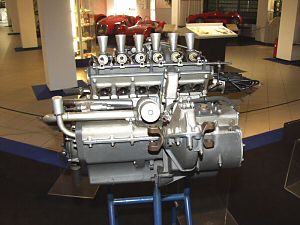 The Maserati Tipo 8/F1 engine |
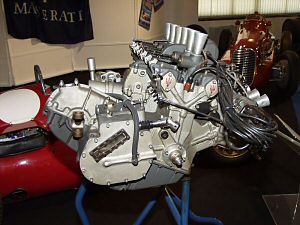 |
|
This experimental engine was designed and built in 1963 and developed in 1964 to run in the F.1 World Championship for 1½-litre single-seaters. The 60° V-12 engine with transmission unit was designed to be mounted in a transverse rear position. In 1966, a new 3-litre formula was introduced causing the project to be abandoned. |
||
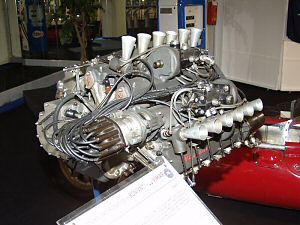 |
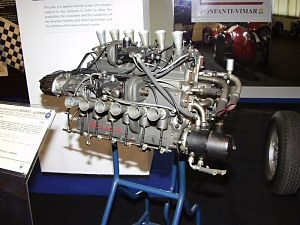 |
|
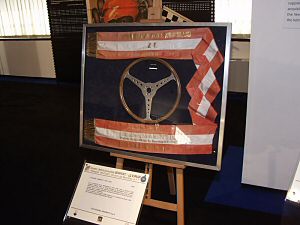 Juan Manuel Fangio's steering wheel |
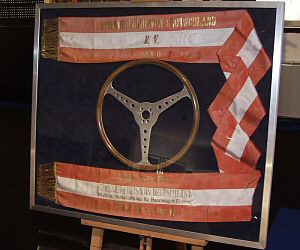 |
|
This is the steering wheel from the Tipo 250F monoposto with which Juan Manuel Fangio won the F.1 German Grand Prix after having performed the drive of his life at the expense of the Lancia/Ferraris of Mike Hawthorn and Peter Collins. A legendary victory. |
||
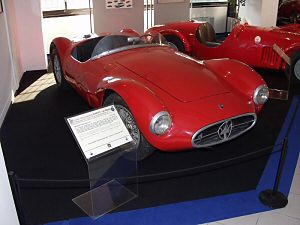 Maserati A6GCS/53 |
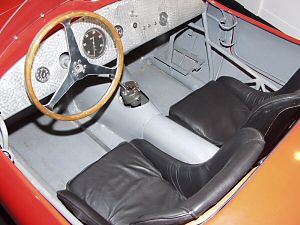 |
|
This is the updated version with twinoverhead camshafts, while the chassis was the work of Ing. Gioachino Colombo. A victorious car on many occasions, it was driven by Juan Manuel Fangio, Onofre Marimon, Gianfranco Bonetto and Toulo de Graffenreid. Luigi Musso won the 1935 and 1954 Italian Championship for Sports cars, and in 1945, Sergio Mantovani won the 'Coppa d'Oro delle Dolomiti'. |
||
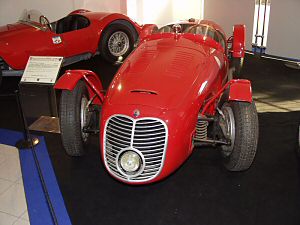 Maserati A6GCS 'Monofaro' |
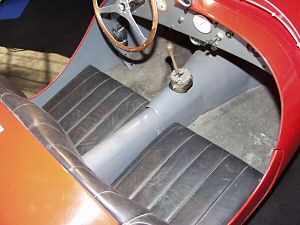 |
|
The Tipo A6GCS 'Monofaro' was built to compete with the Ferrari in the 2-litre Sports category. The debut was a great success. At the 'Circuito di Modena', Alberto Ascari was first with Luigi Villoresi second. |
||
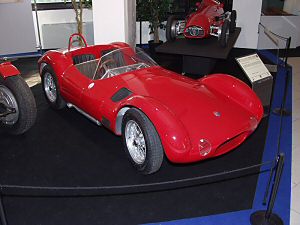 Electric-powered model of a Maserati Tipo 60 |
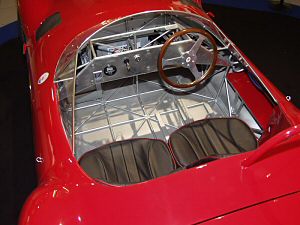 |
|
An accurate two-thirds scale working model of a Tipo 60 powered by an electric motor. |
||
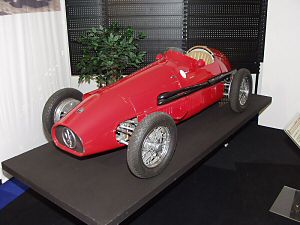 Electric-powered model of a Maserati Tipo 250F |
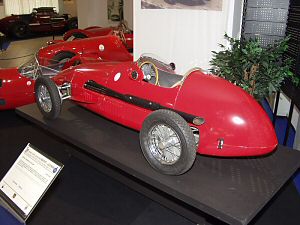 |
|
An accurate two-thirds scale working model of a Tipo 250F powered by an electric motor. |
||
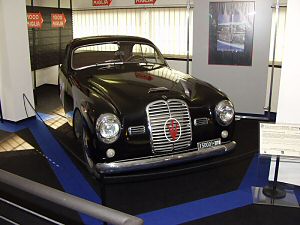 The Maserati Tipo A6 Coupe by Pinin Farina |
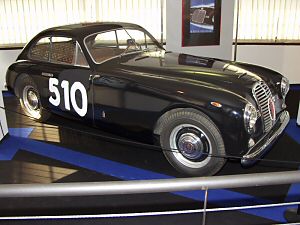 |
|
At the 1947 Geneva Motor Show, Maserati introduced the A6 Coupe with coachwork by Pinin Farina, that was produced in a limited series, starting with a few significant modifications in 1948. The tubular chassis adopted round section components, whilst the engine is derived from the competition unit. It was the last design by the Maserati brothers, who shortly after left the company. The car took part in the Mille Miglia in 1948 and was placed 12th in the Sports class up to 2 litres as it passed through Rome, but later had to withdraw. |
||
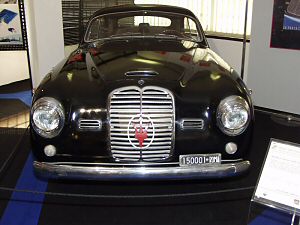 |
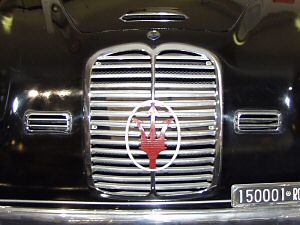 |
|
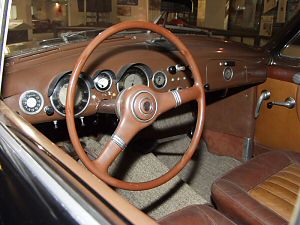 |
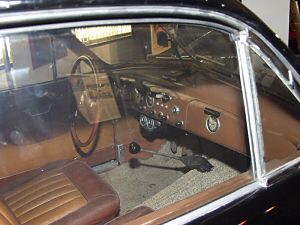 |
|
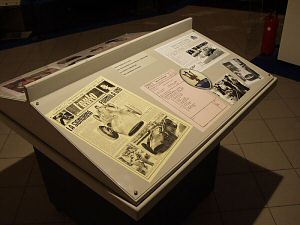 A tribute to Maria Teresa de Filippis |
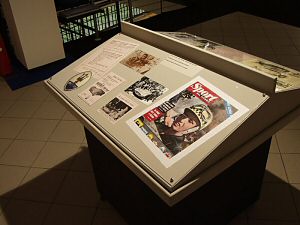 |
|
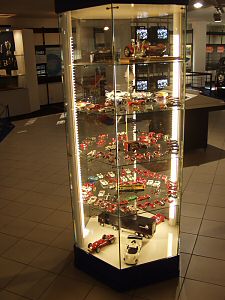 Maserati models |
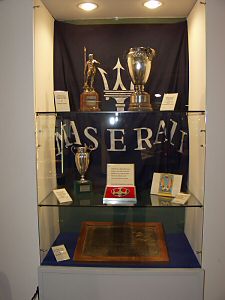 Maserati trophies |
|
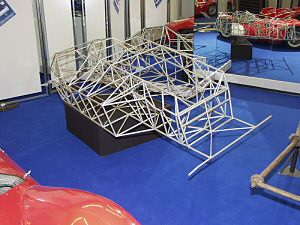 The chassis of the Maserati Tipo 60/61 'Birdcage' |
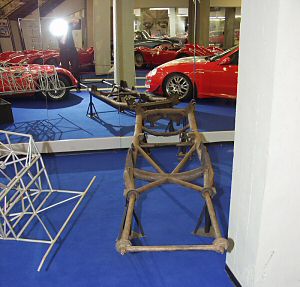 The chassis of a Maserati Tipo 4CLT/48 |
|
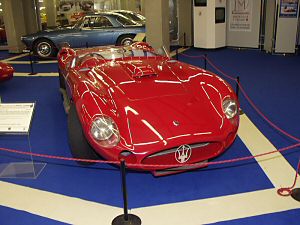 Maserati Tipo 450S #4501 |
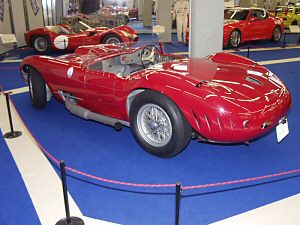 |
|
An evolution of the Tipo 300S and of the Tipo 350S, this Maserati sportscar is powered by a 90° V8 engine, tuned by Guido Taddeucci under Giulio Alfieri's guidance. The tubular steel chassis was made by Valerio Colotti. This Trident car took part, in varying fortunes, in the 1957 Sportscars Championship, competing with Aston Martins, Ferraris and Jaguars. |
||
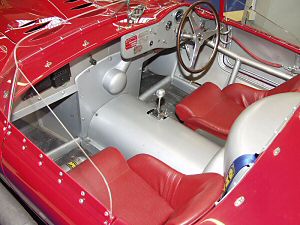 |
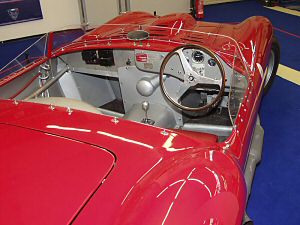 |
|
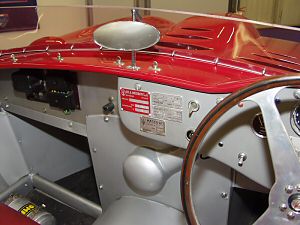 |
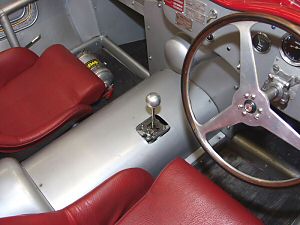 |
|
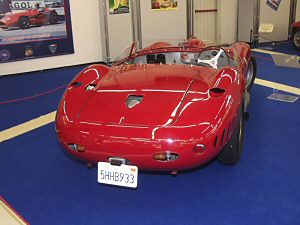 |
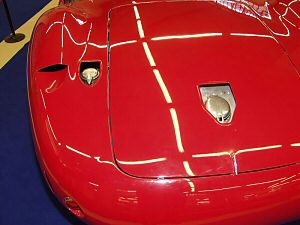 |
|
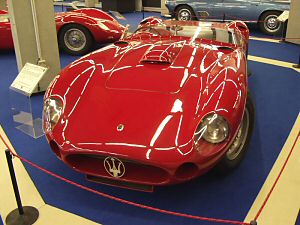 |
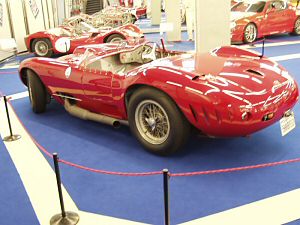 |
|
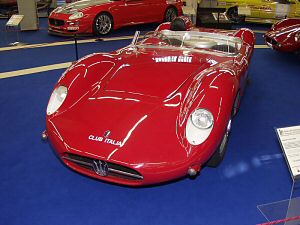 Maserati Tipo 200 SI |
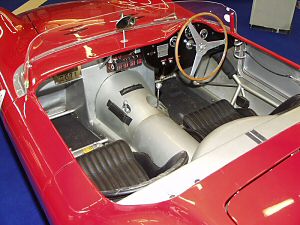 |
|
The Tipo 200SI ("SI" confirms the conformity with the regulations for the Sport International category) was the final evolution of the Tipo 200S. Introduced in 1955 in response to the threat of the Ferrari 500 Mondial. It used the 4CF2 engine designed in 1952 for the Formula 2 single-seater. It was a modern and agile car that was successful in the International FIA Championship. |
||
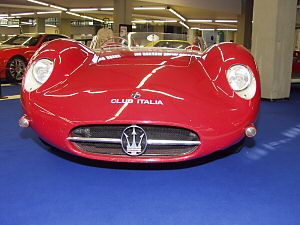 |
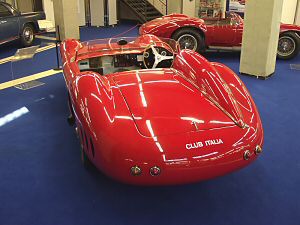 |
|
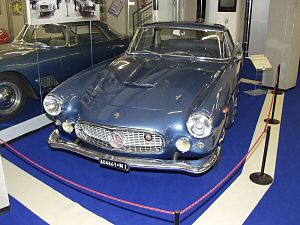 Maserati 3500GT |
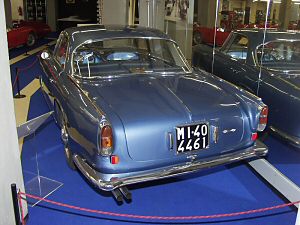 |
|
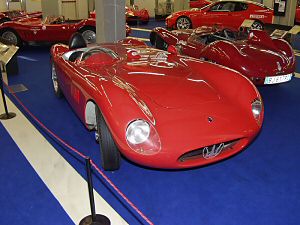 Maserati Tipo 150S |
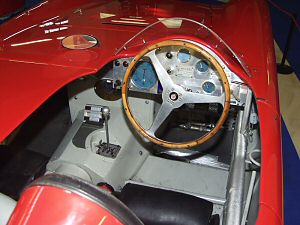 |
|
With this model, Maserati returned to racing in the small Sportscar class, highly regarded albeit by racing drivers from the other side of the Atlantic. The Tipo 150S had several battles with the Porsches and also the OSCA 'cousins', built by the Maserati brothers in Bologna. The live axle of the A6GCS was replaced by a De Dion arrangement with transverse leaf spring. |
||
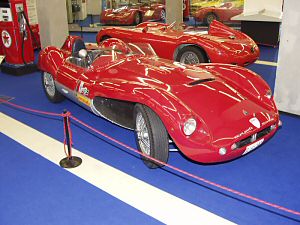 1957 Parson Maserati Tipo 150S |
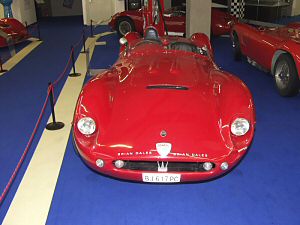 |
|
The 150S engine of the 'Casa del Tridente' was powerful and robust, so other race car makers adopted it. The most widely used chassis were the Coopers, Lotuses, the Emerysons of the Equipe Nationale Belgique and, like this one, the Parson. Built and driven by the Englishman Stuart Young in 1957, the Parson used a 150S engine and a 4 speed gearbox 150/200S. |
||
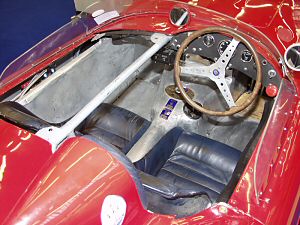 |
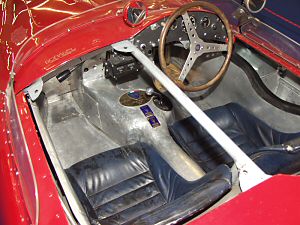 |
|
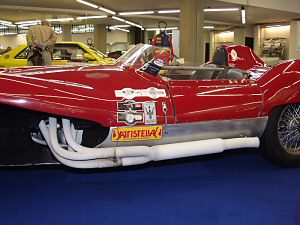 |
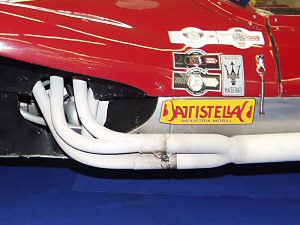 |
|
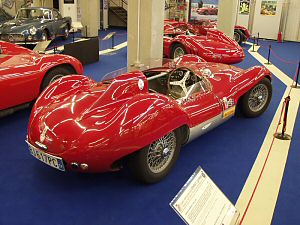 |
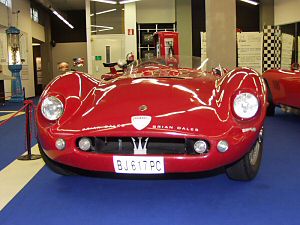 |
|
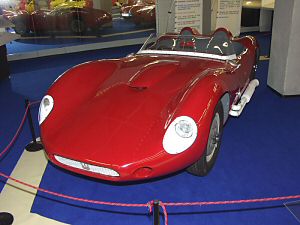 WRE-Maserati 4-cyl 1990cc |
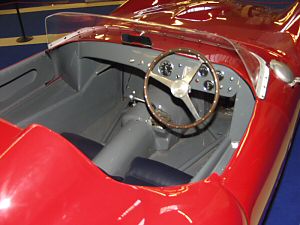 World Racing Enterprise |
|
This was one of the sportscars built in the late fifties, in Great Britain and in Italy, by World Racing Enterprises. Construction was started in 1959 in Great Britain, but it was completed in Modena, where the Maserati 2 litree engine was installed, together with the clutch-gearbox assembly. The WRE-Maserati was successful in Italian hill climb and track races. |
||
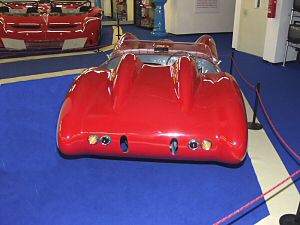 |
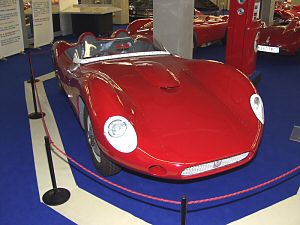 |
|
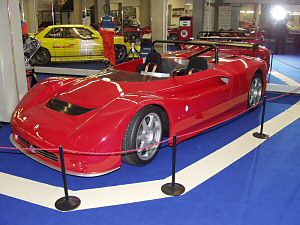 Maserati Barchetta |
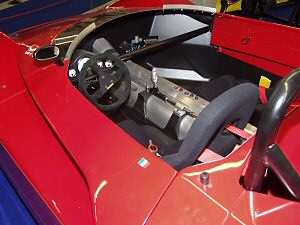 |
|
The 1991-1993 Barchettas were produced solely for competition use, and carried a name made famous by the Trident sportscars of the forties and fifties, with a bodywork in composite and carbon fibre. Tested by Michele Alboreto, the cars took part in the Grantrofeo Barchetta; six races in 1992 and ten in 1993, on the most famous race tracks in Europe. |
||
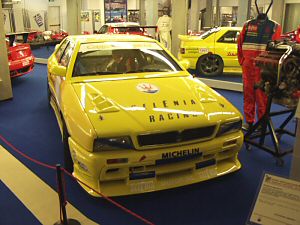 Maserati Ghibli Open Cup 'Evo' |
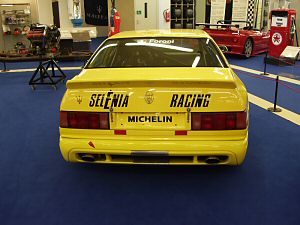 |
|
Between 1995 and 1996, 60 Ghibli Cup cars were built, with the engine tuned to 330 bhp, a different differential ratio and 17 inch wheels. |
||
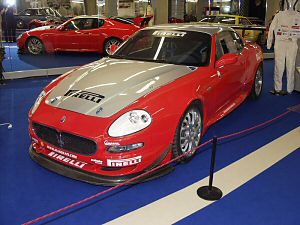 Maserati Coupe Trofeo | 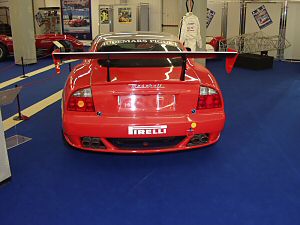 |
|
This is the racing version of the Grand Turismo coupe introduced by the Trident marque in 2002, available as a Cambiocorsa with the sequential gearbox. The coupe Trofeo and Trofeo GranSport, took part from 2003 till 2006 in the Trofeo Maserati Europa, with the overall victory going year by year to Emanuele Smurra, Andrea Palma, Alberto Cerrai and Maurizio Fabris. |
||
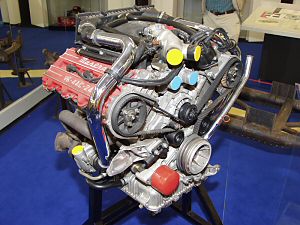 The Maserati V6-24V-4AC engine | 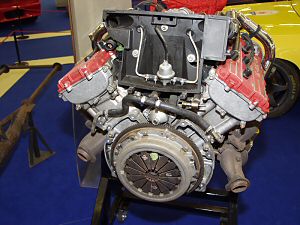 Rear view showing flywheel and clutch pressure plate |
|
A Maserati built 90° V6 24-valve four overhead camshaft engine with twin turbochargers. Introduced by Maserati in 1988, it represented the final evolution of their Biturbo engine. A superb and robust engine fitted to the 2.24v and 4.24v, it went on to power the 1991 Barchetta race car, the Racing, the Ghibli, Ghibli GT, Ghibli Cup and Ghibli Open Cup racer and the V6 Quattroporte IVs (not forgetting the "due, due, due, quattrovalvole!"). |
||
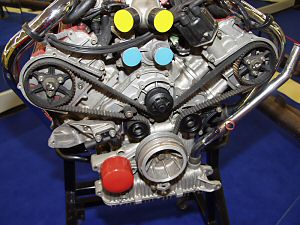 The timing belt that should be changed every 25,000 miles!! |
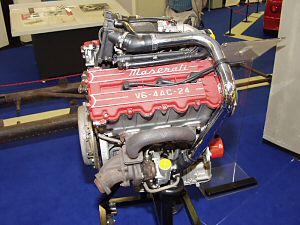 Left-hand side view of the 24-valve engine |
|
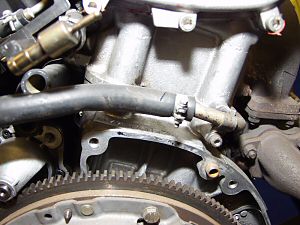 Location of engine number |
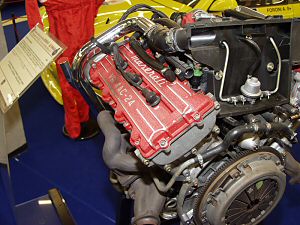 Right-hand side cylinder bank |
|
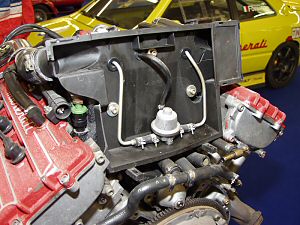 Fuel pressure regulator sited in the air filter box |
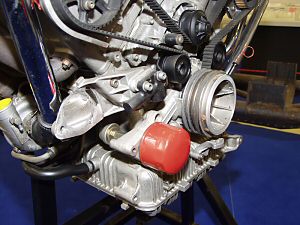 Oil filter (red!) |
|
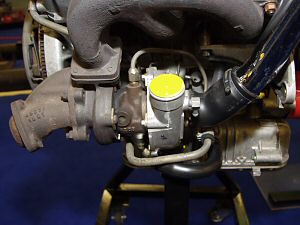 Left-hand side bank IHI turbocharger |
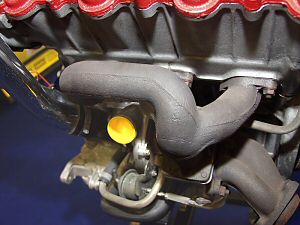 Right-hand side bank IHI turbocharger |
|
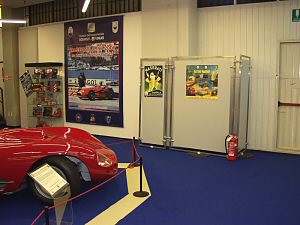 The Lower Floor Exhibition Hall |
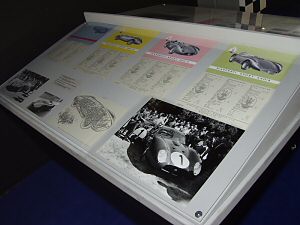 Brochures, photos and specifications |
|
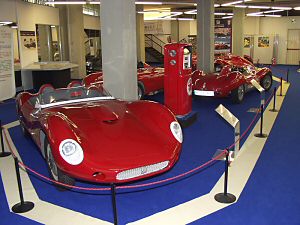 The Lower Floor Exhibition Hall |
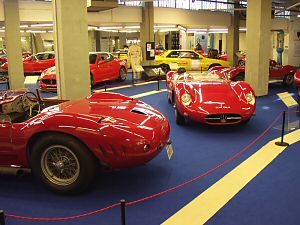 The Lower Floor Exhibition Hall |
|
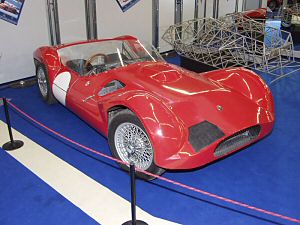 And there was this strange 'Birdcage' type racer |
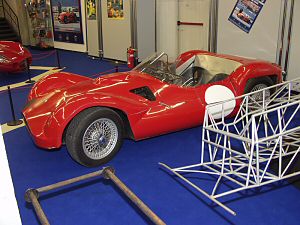 |
|
The example on display is a 2-litre front-engined race car, modified, both mechanically and to the front bodywork, during a period of racing in England. |
||
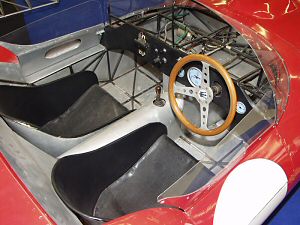 |
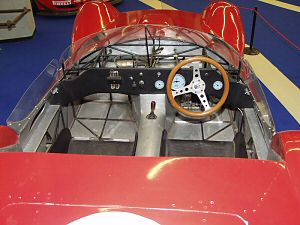 |
|
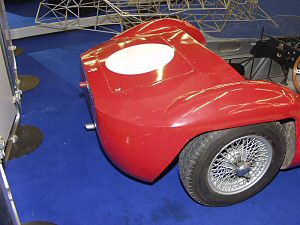 |
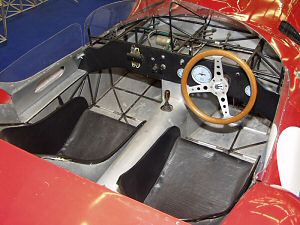 |
|
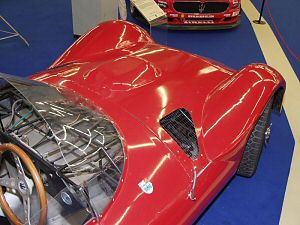 |
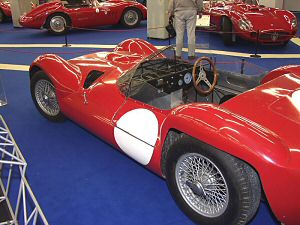 |
|
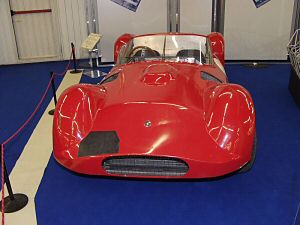 |
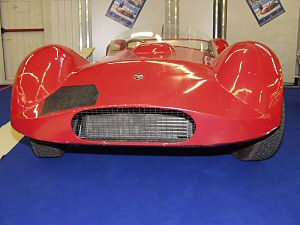 |
|
|
|
|
 |
||
|
To enter Enrico's Maserati Pages CLICK HERE! Copyright: Enrico's Maserati Pages - © 2007. All rights reserved. |
